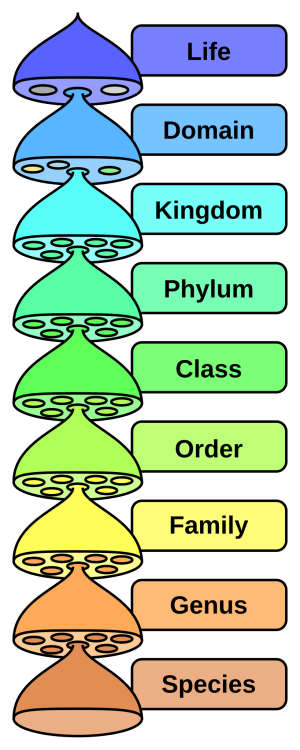
Knowledge and Skills Statement
The further explanation is designed to be a resource for educators that helps them better understand the topic their students are learning. Further explanations may be written at a more complex level than would be expected for students at the grade level.
The focus of this student expectation is on understanding the taxonomic system rather than classifying organisms into the system.

Peter Halasz. (User:Pengo), Biological classification L Pengo vflip, marked as public domain, more details on Wikimedia Commons
This standard prepares students to learn Bio.9.A, where the student is expected to analyze and evaluate how evidence of common ancestry among groups is provided by the fossil record, biogeography, and homologies, including anatomical, molecular, and developmental.
It may be beneficial to make a connection to grade 7 math, where students learn about the organization of real numbers into subsets that include whole numbers, rational numbers, irrational numbers, and integers. This hierarchical classification system is similar in structure to the taxonomic system.
Notes:
Image Source: File:Biological classification L Pengo vflip.svg - Wikimedia Commons
Research
Robertson, Bill. “Science 101.” Science and Children 47, no. 5 (2010):60–63. http://www.jstor.org/stable/43174707
Summary: In, "Science 101: What's behind the biological classification system in use today?," an activity on sorting coins is used to help students recognize that a classification system is based on certain charateristics shared within a group and is used to connect students to the classification of organisms used today.
